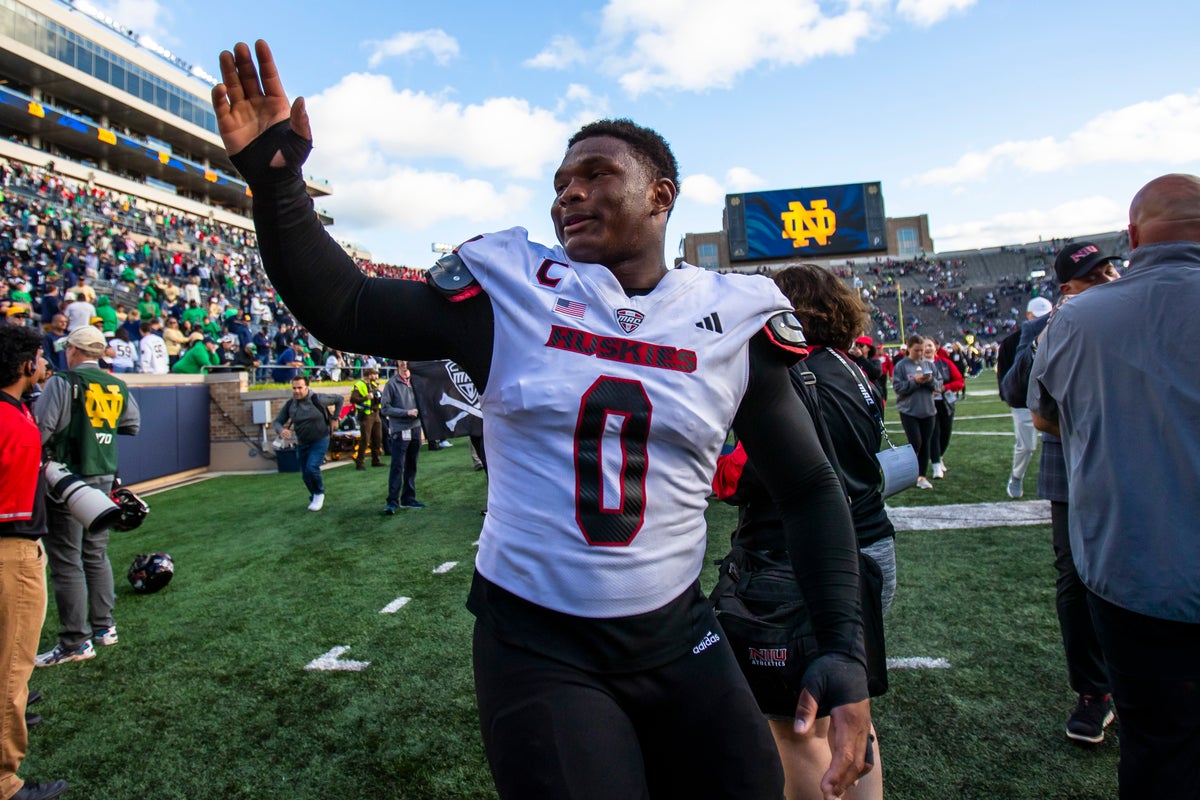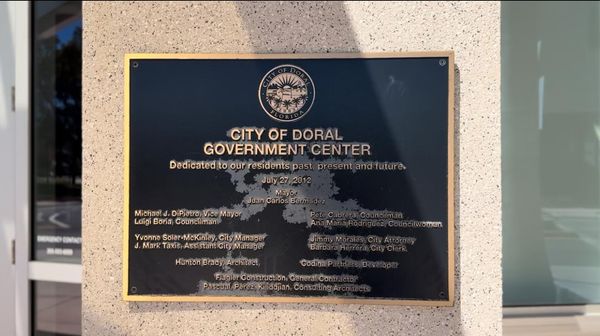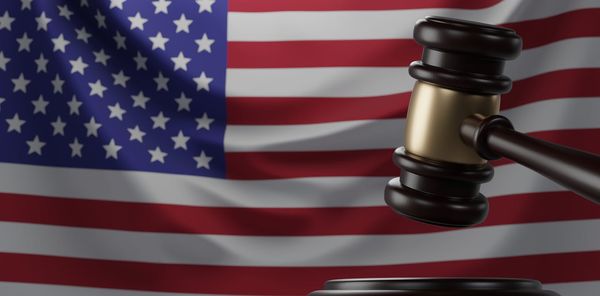
The athletic director at a mid-sized school that's making a splash this season has a modest proposal for taming what many say is a transfer-portal system run amok in college sports.
Sean Frazier, the AD at Northern Illinois — remember, the team that beat national finalist Notre Dame earlier this season — is talking about a “talent acquisition fee."
When schools sign players from other teams, they would pay those teams a fee in exchange for the player. It's not that different from the way transactions go down with what are known as “transfer fees” in European soccer.
It's an idea that Frazier, admittedly, is still sketching out on cocktail napkins. But he thinks it might help the small guys sustain their programs while adding transparency to deals involving some of the 11,000-plus football players across all divisions who enter the portal — the terms of some of those life-changing transactions themselves pecked out on cell phones in the middle of the night.
“At the end of the day, the kid deserves the compensation and support,” Frazier said in an interview with The Associated Press at the NCAA convention this week. “But the institution, to keep the cycle going, they deserve something as well. We're not in the situation to continue to do that if we keep losing our best and brightest.”
Even with success, challenges come for mid-sized schools like NIU
Buoyed by that win over Notre Dame, and a steady string of success over the years, Frazier's school recently announced it was moving its football program from the Mid-American into the Mountain West Conference starting in 2026.
The Mountain West, with champion Boise State in the College Football Playoff this season, is arguably the most formidable of the so-called Group of Five conferences. There are also 129 schools in the FCS — the Football Championship Subdivision that is the latest iteration of what used to be called Division I-AA.
With the House Settlement set to reshape college sports, allowing institutions to pay players directly while also reshaping roster sizes across all sports, smaller schools like NIU have decisions to make. Namely, will they opt into the revenue-sharing agreements that allow the schools to directly pay the players for their name, image, likeness deals? Or will they stick with the model of having third-party collectives broker those deals?
The schools have until March 1 to decide. Neither choice avoids the stark realities of the new college football: It's more expensive than it used to be, and big schools will always have the resources to draw in promising players who honed their skills at small schools.
Frazier used the example of 285-pound defensive tackle Skyler Gill-Howard, who came to NIU as a walk-on, got better each year, had five sacks for the Huskies this season, then entered the transfer portal and will play his last year of eligibility at Texas Tech.
“He did a wonderful job. Our coaching staff did a great job developing him,” Frazier said. “The heartache of it is, he's gone. From the G5 perspective, we're fine with the developmental side of things. There's a certain level of respect there. But this could help institutions like us, where there's a flat fee, or dollar amount, that's a show of appreciation for the development of the game.”
An interesting plan that would face plenty of hurdles
Any plan like this would face roadblocks aplenty. First off, even though things have moved more quickly in recent years, college sports is traditionally glacial in making big changes.
Secondly, as the recent takedowns of the NCAA in court that have led to today's changes have reiterated, the U.S. court system generally doesn't like things that restrict players' ability to make money.
It happened to the NFL, too. In the 1970s, a judge declared illegal “The Rozelle Rule,” a rule named after the late commissioner, Pete Rozelle. The rule is similar to Frazier's idea in that it allowed the league to award draft picks (and sometimes players) from teams that signed players with expired contracts to the teams those players left.
In soccer, transfer fees have been the norm in Europe — teams essentially pay other teams for players instead of trading for them. It's an estimated $10 billion market, though a recent court ruling there could lead to anything from tweaks to a full-scale overhaul of that system.
“I'd see very little chance for something like that to happen," Gabe Feldman, a sports law expert at Tulane, said of Frazier's fee idea. "There are lots of ideas out there, but that doesn’t mean they’ll go into effect.”
Leaders looking for innovative plans to calm down the transfer portal
Though the House Settlement brings college sports closer to a solution on how to pay players, the transfer portal remains a moving target.
The leadup to this year's national title game between Ohio State and Notre Dame brought with it stories of massive movement of players, including from the 12 teams that made the College Football Playoff.
Among this season's biggest headline grabbers were the early season departure from UNLV of quarterback Matthew Sluka, who said promises to pay him $100,000 were not kept. Last year, former Florida QB signee Jaden Rashada sued Gators coach Billy Napier over an unpaid $13 million NIL deal. Rashada now plays at Georgia.
More common are accusations of tampering that leads to programs standing by helplessly as players leave without much, if any, warning.
“I can't believe we live in a world where people are making decisions and issuing offers in text messages,” NCAA President Charlie Baker said. “The number of kids who have told me terrible stories about misrepresentation — there's no process, accountability, no transparency."
Frazier, always in search of resources to recruit, develop and, now more frequently, replace players, doesn't necessarily see his “talent acquisition” fee as a cure-all. But maybe, he says, it's a start.
He points to the NFL, NBA and other pro leagues that have collective bargaining and drafts that set the framework for their sports.
“We don't have that," he said. "This is one of the guardrails that could get us to the point of acknowledging that, yes, you still can buy your team, but it shouldn't be the wild, wild west.”
___
Get poll alerts and updates on the AP Top 25 throughout the season. Sign up here. AP college football: https://apnews.com/hub/ap-top-25-college-football-poll and https://apnews.com/hub/college-football







